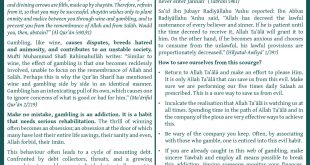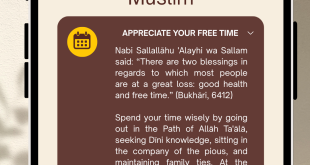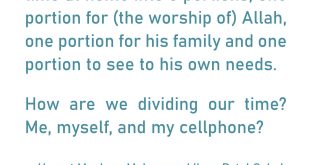“Verily, we revealed the Qur’ān, and we are its Protectors.” (Al-Qur’ān)
REVELATION OF THE QUR’ĀN KARĪM
Allāh Ta’ālā revealed the Qur’ān Karīm from Al-Lawḥ al-Mahfūẓ (the preserved tablet) to the closest sky on Laylat-ul-Qadr. Thereafter, over 23 years, the Noble Qur’ān was revealed to Nabī Ṣallallāhu ‘Alayhi wa Sallam. As the occasion demanded, a few verses would be revealed. At times, a single verse or an entire Sūrah was revealed.
With this, Jibrīl ‘Alayhis Salām would instruct Nabī Sallallāhu ‘Alayhi wa Sallam to place a particular Āyah in a specific place of a particular Sūrah. This way, the Noble Qur’ān was gradually completed and conformed sequentially to the Noble Qur’ān initially revealed to the preserved tablet.
PRESERVATION OF THE QUR’ĀN KARĪM
Many Sahābah Radhiyallāhu ‘Anhum memorized the Noble Qur’ān during the blessed lifetime of Nabi Sallallāhu ‘Alayhi wa Sallam. As verses were revealed, they would commit them to memory.
Some Sahābah were designated to write down the verses of the Noble Qur’ān as soon as they were revealed. They would write these verses upon stones, slates, skins, tree barks, etc. The Noble Qur’ān was then gathered in a book form during the Khilāfah of Sayyidunā Abū Bakr Radhiyallāhu ‘Anhu.
Together with the fixed sequence of verses in each Sūrah, a particular sequence of Sūrahs was also adopted as instructed, or at least indicated by Nabi Sallallāhu ‘Alayhi wa Sallam. This copy of the Noble Qur’ān was then used to transcribe copies of the Qur’ān Karīm into the Quraishi dialect, which were sent to different areas of the Muslim empire during the Khilāfah of Sayyidunā ‘Uthmān Radhiyallāhu ‘Anhu.
The entire Ummah accepted these copies, including the many Sahābah Radhiyallāhu ‘Anhum who were alive then.
SEQUENCE OF THE SŪRAHS
Many Ahādīth indicate that Sūrahs of the Qur’ān Karīm were sequenced during the lifetime of Nabi Sallallāhu ‘Alayhi wa Sallam. This sequence was different from the sequence of revelation.
CONSIDER THE FOLLOWING:
1) Nabi Sallallāhu ‘Alayhi wa Sallam said: I was granted the 7 lengthy Sūrahs in place of the Torāh, the Mi’īn (Sūrahs that have approximately 100 verses) in place of the Zabūr and the Mathāni (slightly shorter Sūrahs) in place of the Injīl. I was then favoured with the Mufassal (short Sūrahs). (Musnad Aḥmed, 16982)
The sequence of the Qur’ān is precisely as detailed in this Ḥadīth, with the lengthy Sūrahs followed by the Mi’īn, Mathānī, and Mufassal.
2) Sayyidunā Aus bin Hudhayfah Radhiyallāhu ‘Anhu narrates that he was in the delegation from Thaqīf that visited Nabi Sallallāhu ‘Alayhi wa Sallam in Madinah Munawwarah. They resided in a tent, and Nabi Sallallāhu ‘Alayhi wa Sallam would sit with them every night after Esha Salāh. One night, Nabī Ṣallallāhu ‘alayhi wa Sallam was significantly delayed. Upon his arrival, they enquired about the reason for the delay. Nabī Ṣallallāhu ‘alayhi wa Sallam replied: “I had not yet completed my allotted portion of the Qur’ān for some reason. I, therefore, disliked coming out (to sit with you) until I completed it”. Sayyidunā Aus Raḍiyallāhu ‘Anhu says: We then enquired from the Ṣaḥābah Raḍiyallāhu ‘Anhum: “How do you divide the Qur’ān into portions?” They replied: “We divide it as follows: 6 Sūrahs, 5 Sūrahs, 7 Sūrahs, 9 Sūrahs, 11 Sūrahs and the Mufaṣṣal, beginning from Sūrah Qāf till the end of the Qur’ān. (Musnad Aḥmed, Abū Dāwūd)
3) Sūrah al-Fātihah is referred to as Fātihat-ul-Kitāb (the beginning of the book) in numerous Ahādīth of Nabi Sallallāhu ‘Alayhi wa Sallam. The mere reference to Surah Fātiha as “the beginning of the book” indicates a sequence.
4) Nabi Sallallāhu ‘Alayhi wa Sallam said: “Recite the two bright Sūrahs (those that contain divine light): Baqarah and Āl- ‘Imrān.” (Muslim, 1337)
5) In other Ahādīth, the very sequence we find in the Qur’ān was maintained when Nabi Sallallāhu ‘Alayhi wa Sallam or senior Sahābah Radhiyallāhu ‘Anhum made mention of different Sūrahs at the same time. For example, Sūrah Ikhlas, Falaq and Nās or Banī Isrā’īl, Kahf, Maryam and Tāha.
6) Sayyidunā Sa’īd bin Khālid Radhiyallāhu ‘Anhu relates that Nabi Sallallāhu ‘Alayhi wa Sallam recited the 7 lengthy Sūrahs in one Rak’at. (Musannaf ibn Abi Shaybah, 385/11)
7) Nabi Sallallāhu ‘Alayhi wa Sallam used to recite the entire Qur’ān Karīm to Jibrīl ‘Alayhi as-Salām during Ramadhān. (Bukhari, 4998) To complete a full recital of the Qur’ān Karīm, some sequence would have had to be maintained.
These are but a few proofs that indicate that many Sūrahs of the Qur’ān Karīm were placed in sequence during the lifetime of Nabi Sallallāhu ‘Alayhi wa Sallam.
The beautiful sequence of the Qur’ān is clear for all to see. Look at the challenge that Allāh Ta’ālā posed to the disbelievers:
In Surah Al-Baqarah, which is the second Sūrah in terms of sequence, Allāh Ta’ālā says: “If you have any doubt regarding what we have revealed upon our slave (Nabi Sallallāhu ‘Alayhi wa Sallam), bring forth a Sūrah like it.” (Al-Baqarah, 23). There is only one Surah before it, so Allāh Ta’ālā challenged them to bring forth just one Surah. Then, in Sūrah Hūd, Sūrah No.11, Allāh Ta’ālā says: “Or do they say, “He invented it”? Say, “Then bring ten Sūrahs like it…” (Al-Hūd, 13). It cannot just be a mere coincidence that Allāh Ta’ālā would bring the challenge of replicating ten Sūrahs here, where there are just ten Sūrahs before it!
There are many other examples to prove the miraculous sequence of the Qur’ān Karīm.
Nevertheless, it is imperative to hold onto the order of Sūrahs as documented in the copies of the Qur’ān that Sayyidunā ‘Uthmān Radhiyallāhu ‘Anhu sent to the different regions. This was either directly dictated by Nabi Sallallāhu ‘Alayhi wa Sallam or as a result of the Ijmā’ (consensus) of the Sahābah Radhiyallāhu ‘Anhum. In either case, it will be improper to invent any other sequence. Holding on to the sequence will prevent untold corruption and trials in the Dīn of people. (Paraphrased from Al-Burhān, p. 61)
Rabī’ah Rahimahullāh was asked: “Why were Sūrah Baqarah and Āl- ‘Imrān, which were revealed in Madīnah, placed at the beginning of the Qur’ān even though over eighty Sūrahs were revealed in Makkah?” He replied: “They were placed at the beginning of the Qur’ān by those who compiled it (in a book form) based on knowledge from (the Being who revealed it). They had consensus upon this even though they knew (of the fact that over 80 Sūrahs were revealed in Makkah). This is sufficient, and there is no need to pose any questions regarding this.” (Tafsīr Qurṭubi)
Someone once requested ‘Ikrimah Rahimahullāh to compile the Qur’ān, verse by verse, in the order of revelation. He responded to this request by saying: “Even if all of Mankind and Jinn were to come together and attempt this task, they would be unable…”
With its current order, the Qur’ān Karīm has provided guidance for millions of people over the centuries. There can be no justification for tampering with this sequence. The great differences of opinion in determining which Surahs are to be categorized as Makki or Madani also make it impossible to determine the true sequence of revelation. The true benefit of Da’wah will be attained by calling people towards the entire Qur’ān Karīm while maintaining its proper sequence.
In conclusion, Abū Bakr bin al- ‘Anbari Rahimahullāh said: “The sequence of the Sūrahs in the Qur’ān is similar to the sequence of its verses. Both are from Nabi Sallallāhu ‘Alayhi wa Sallam. Now, whoever shifts any Sūrah forward or moves it backward has destroyed the order of the Qur’ān.”
May Allāh Ta’ālā make us from amongst the people of the Qur’ān, and may He protect us from all types of trials and tribulations in terms of our Dīn. Āmīn
17 Rajab 1445 / 29 January 2024 A0042
 Wifāq ul Ulāma (SA) ASSOCIATION OF SOUTH AFRICAN 'ULAMA
Wifāq ul Ulāma (SA) ASSOCIATION OF SOUTH AFRICAN 'ULAMA



